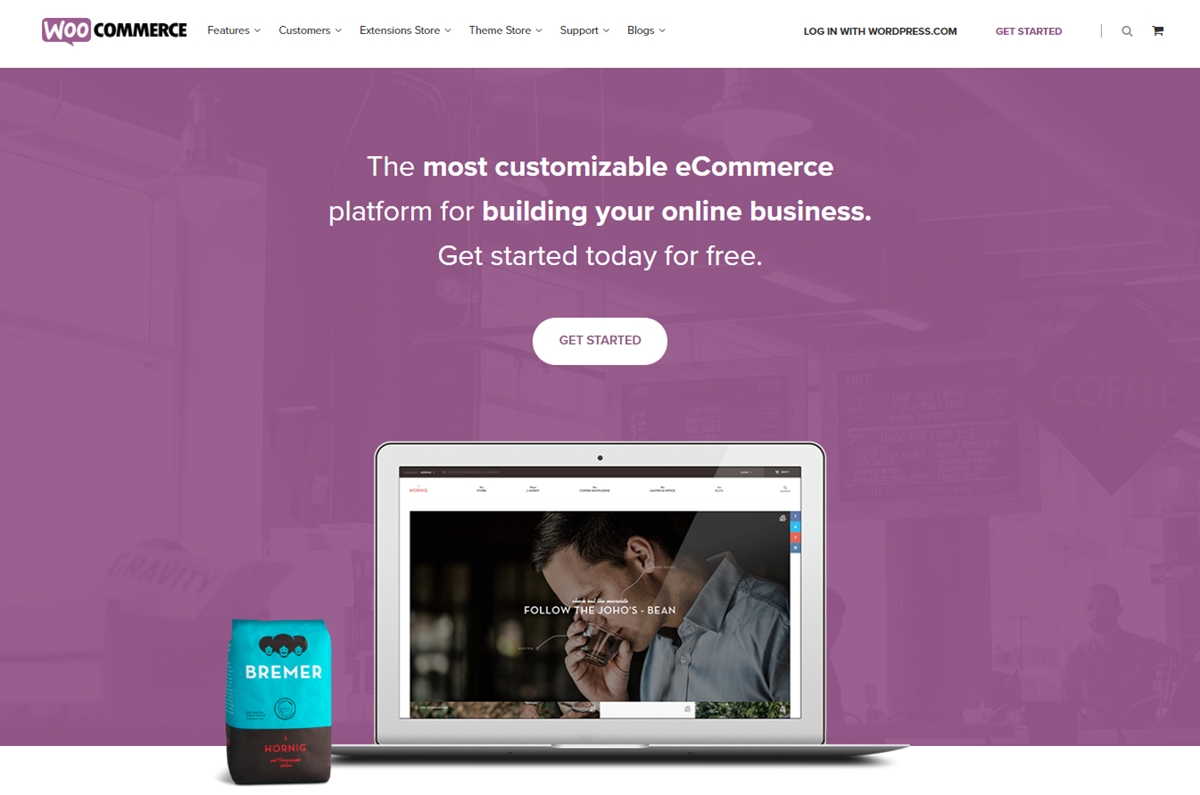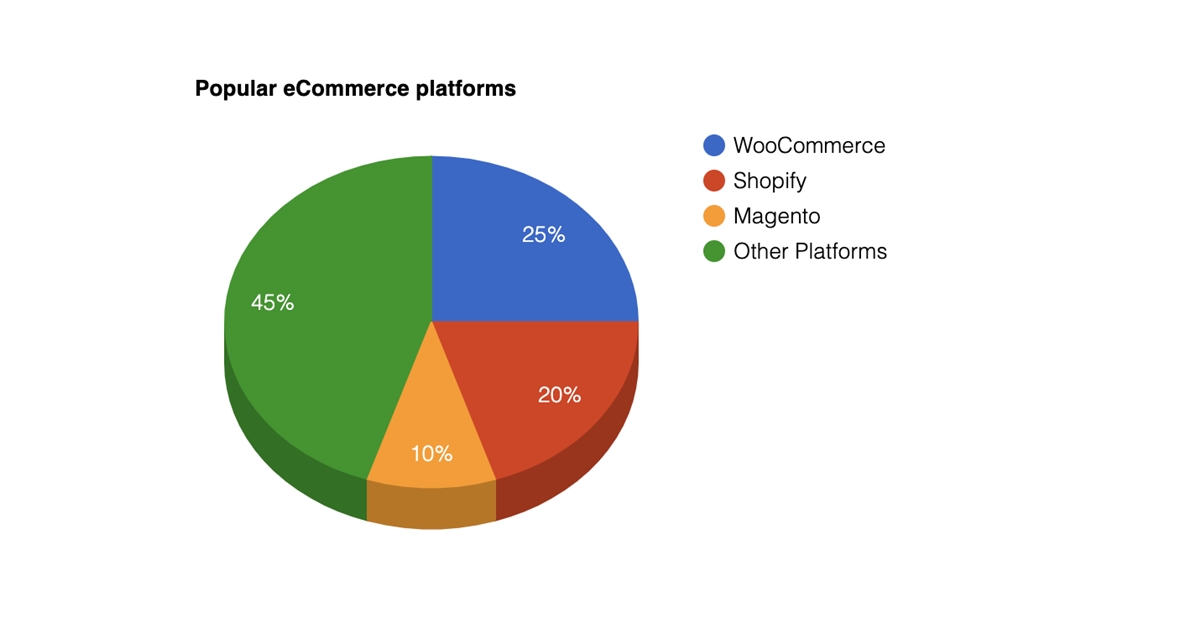Dropshipping with WooCommerce vs. Shopify! Which is superior?
One of the most well-liked business models in the Internet era is dropshipping, particularly among business owners who don't want to make a sizable upfront investment. For dropshipping companies to avoid having to create and manage an online store on their own, there are many platforms that offer hosting services. These platforms include WooCommerce and Shopify.
They are both well-known names in the sector that offers hosting services for online stores. What distinguishes them from one another, then? Which one should you pick if you want to dropship? You can decide for yourself based on your needs after I compare the advantages and disadvantages of Shopify vs. WooCommerce dropshipping in this article. Let's begin immediately!
Shopify Dropshipping:
What is Shopify?

You can create an online store for yourself using the website hosting service Shopify. With Shopify, you won't need to pay extra for hosting because it's a part of every plan. Whether you are a novice or an expert, Shopify offers you every feature you require to create and manage an online store.
To use Shopify, you don't have to pay right away; you have 14 days to try it out before deciding. You can use Shopify's free themes and free apps to create a standalone website during your free trial period.
A SaaS (Software as a Service) tool is Shopify. This means that rather than owning the website or the hosting, you pay a monthly fee to subscribe to use it. You can manage your Shopify store and Shopify dropshipping from anywhere in the world as long as you have a web browser and Internet access.
Pros and Cons of Shopify:
PROS:
1. Well-designed and functional Dashboard:

2. Free features:
The selection of a theme is one of the first steps in the website-building process. The majority of the time, themes are not free, but Shopify is an exception. The Shopify theme store offers a wide variety of free themes for a variety of uses.
These no-cost themes are in fact no-cost. There are no restrictions on their functionality. The theme is highly adaptable, allowing you to use free fonts, your preferred color scheme, your own photos, and much more. If you don't yet have your own photos, you can use any of the thousands of stock images with an eCommerce theme that were taken by Shopify photographers. For beginners who want to try things out before making any investments, this is the ideal offer.
3. There is a plan for you, no matter you are a beginner or an expert:
Be realistic for a moment. At first, it's acceptable to test out free options, but once you've made the decision that you want to launch and maintain a serious online business, you'll need to make a financial commitment. Products, marketing expenses, domain fees, and a Shopify plan will all be added to your expenses.
However, keep calm. Shopify is great because it offers a pricing option for everyone. If money is tight, you can subscribe to Shopify Lite, which costs just $9 per month. The $29 monthly cost of the Basic plan is something you can afford if you have more money available. Additionally, the Shopify Plus plan is for you if you think your business idea has a lot of potential and you want to launch a sizable store right away. For more details, see our review of the Shopify plans.
4. Tons of apps:
On the Shopify app store, there is probably an app for every task you need to perform to run your store. You can have apps for countdown timers, product sourcing apps for dropshipping, and many more. You will frequently have to pay to use apps. But there are countless free apps that you can use too.5. Tons of support:
While using Shopify, you can get support from a variety of sources. Shopify works hard to make sure you have access to as many resources of support as they can in order to help you succeed on their platform.
You can enroll in the Shopify Academy, a free course for eCommerce business owners, if you are new to both Shopify and business. This course will teach you about a variety of business, eCommerce, and Shopify-related topics. Shopify also has a large staff of support agents available to help you around-the-clock if you experience any issues with your store. On Shopify, there is a dedicated community where seasoned eCommerce professionals are eager to share their knowledge and counsel with novices.
6. Selling on multiple channels:
To help you reach more customers and boost your sales, Shopify integrates its platforms with a variety of sales channels. You can easily integrate the following major channels with your Shopify store:
- Sell on Amazon – Connecting Shopify to Amazon Professional Seller.
- Sell on Facebook – Selling your Shopify products on a Facebook page.
- Sell on Pinterest – Selling your products through pins directly.
- Sell on Mobile Apps – Selling Shopify products on apps you develop.
7. Excellent site performance:
Customers don't want to stand in line, and they also don't want to view websites that take a long time to load. A website that loads slowly is likely to lose the majority of its visitors, and if they do, your products won't even get a chance to be seen, let alone sold. With Shopify, you won't have to worry about websites that take a long time to load because those powered by Shopify are quick.
8. Shopify is powering more than 1 million stores up to 2019:
The figures already speak for Shopify.
CONS:
Despite its many strengths, Shopify does have some weaknesses.
1. It uses its own coding language.
Shopify makes use of a PHP coding language it created on its own called "Liquid." Since all of Shopify's themes are coded in this manner, changing them requires knowledge of the programming language. Although this isn't a weakness for Shopify, it undoubtedly is for many users who don't know how to code in Liquid. However, you need not worry because Shopify support is always available to assist you with theme customization.
2. Price of monthly subscription:
As I've already mentioned, Shopify is available for $9/month to get started, but this Lite plan is only for Buy Button sellers who don't require a standalone website. Shopify starts at $29 per month and goes up from there if you want to create and manage a standalone, useful website.
3. Transactions fee:
Users of Shopify are required to pay a transaction fee equal to a percentage of their sales. If you choose the Shopify Payment option as your credit card processor, this fee is no longer assessed on any of Shopify's plans.
1. It uses its own coding language.
Shopify makes use of a PHP coding language it created on its own called "Liquid." Since all of Shopify's themes are coded in this manner, changing them requires knowledge of the programming language. Although this isn't a weakness for Shopify, it undoubtedly is for many users who don't know how to code in Liquid. However, you need not worry because Shopify support is always available to assist you with theme customization.
2. Price of monthly subscription:
As I've already mentioned, Shopify is available for $9/month to get started, but this Lite plan is only for Buy Button sellers who don't require a standalone website. Shopify starts at $29 per month and goes up from there if you want to create and manage a standalone, useful website.
3. Transactions fee:
Users of Shopify are required to pay a transaction fee equal to a percentage of their sales. If you choose the Shopify Payment option as your credit card processor, this fee is no longer assessed on any of Shopify's plans.
WooCommerce Dropshipping:
What is WooCommerce?

WooCommerce is not a hosted eCommerce platform, in contrast to Shopify. With the help of the free Wordpress plugin WooCommerce, you can create an independent, useful online store for your Wordpress website.
In conclusion, WooCommerce aids in the development of a Wordpress-based online store. A content management system called Wordpress is used to power millions of blogs worldwide. Furthermore, WooCommerce turns this content platform into an effective eCommerce platform.
To this day, the most common way to create and manage an eCommerce website is by integrating WooCommerce with Wordpress.

Pros and Cons of WooCommerce:
PROS:
1. Customization is limitless
Because Wordpress is an open-source platform, the source code is accessible, and it was created using the well-known PHP programming language. As a result, there are countless customization options available with WooCommerce. It is possible for you to design and alter your store however you please. The most flexible eCommerce platform in the world is WooCommerce.
2. Advanced features for larger online stores:
Users of WooCommerce dropshipping are typically companies that require a bigger online store. When you get bigger, flexibility is more important. WooCommerce has a sizable library of both free and paid plugins that you can use to give your store a lot of flexibility and power.3. Powerful SEO
As a content management platform, Wordpress has the infrastructure for blogs and enables you to delve deeply into the data's source code. This will enable you to take full advantage of SEO and move up to the top spot in your niche's Google Rankings.CONS:
1. WooCommerce is hard to use for beginners:
For some people, especially those who are not familiar with website development, what makes WooCommerce great can be a drawback. Before using WooCommerce to create a respectable website, a complete beginner will need to learn a fair amount about websites.2. Lack of support:
WooCommerce doesn't offer phone support to its customers. You can open a ticket with WooCommerce Support, but it might take a lot longer than it would with Shopify to receive assistance. In WooCommerce communities, you can find solutions to problems you encounter, but it will take a lot more work, and you'll need to be a great self-learner. Although freedom sounds wonderful, if you are unable to handle it, it can also present a serious problem.3. More work:
When you use Shopify, you can solve a problem by sending a support request to their customer service department, who will take care of everything for you. WooCommerce websites require a lot more work to maintain because you are in charge of everything from web hosting to website security and plugin implementation.
Learn more about Shopify vs Woocommerce Dropshipping
Thank you for reading
Comments
Post a Comment